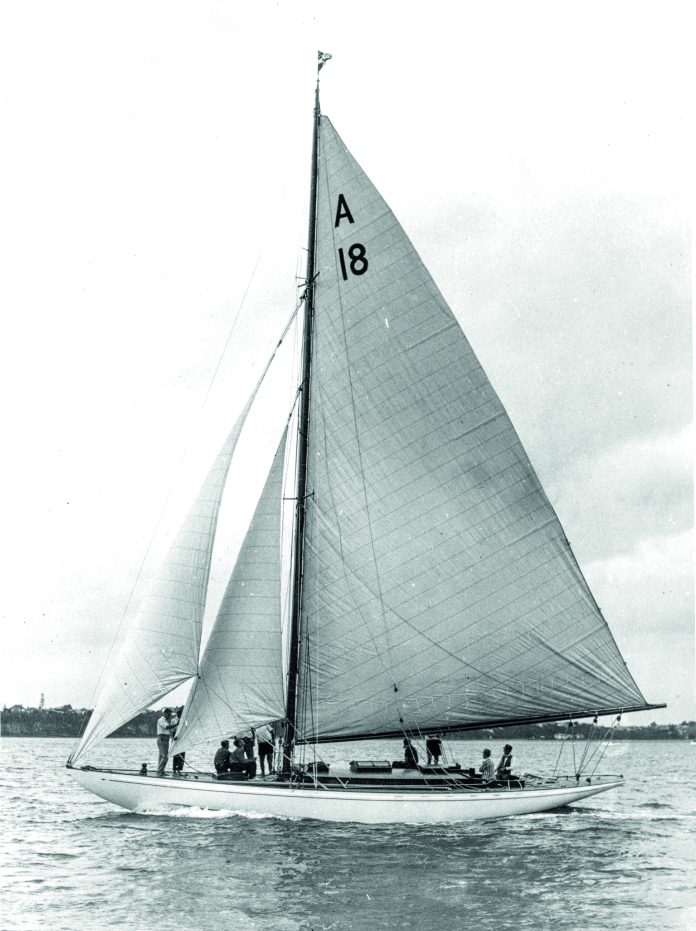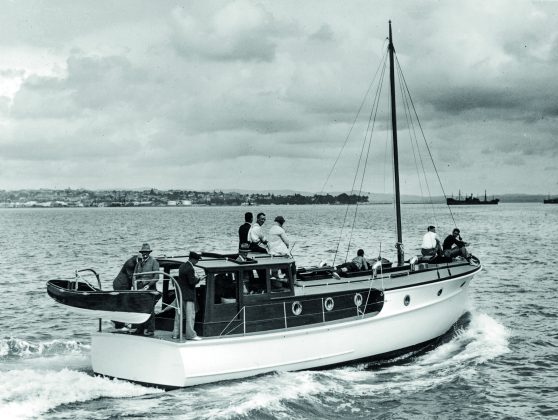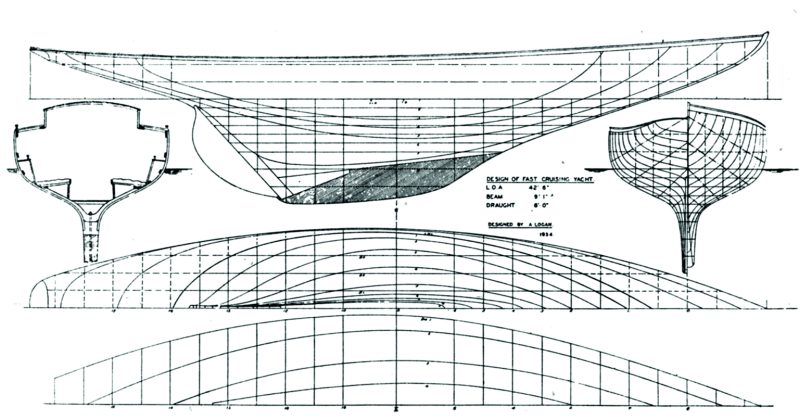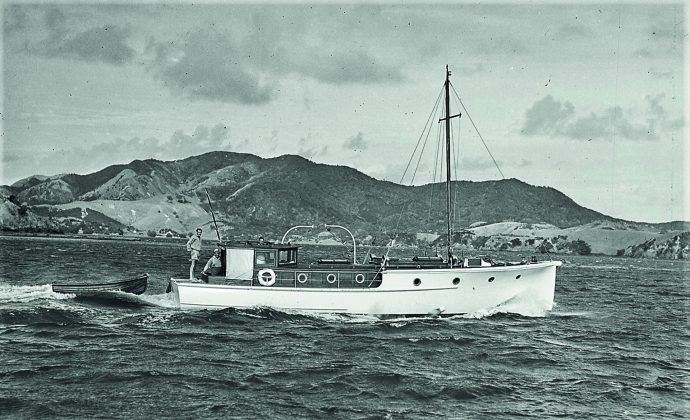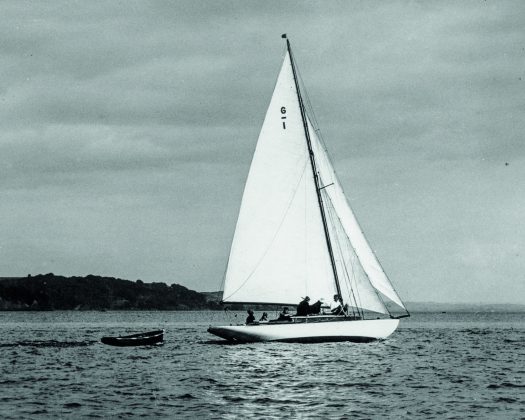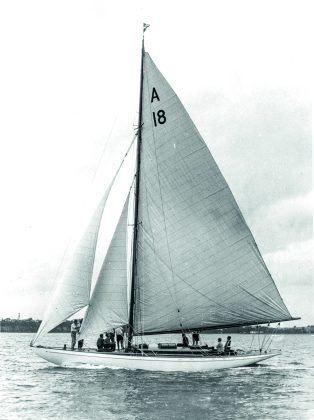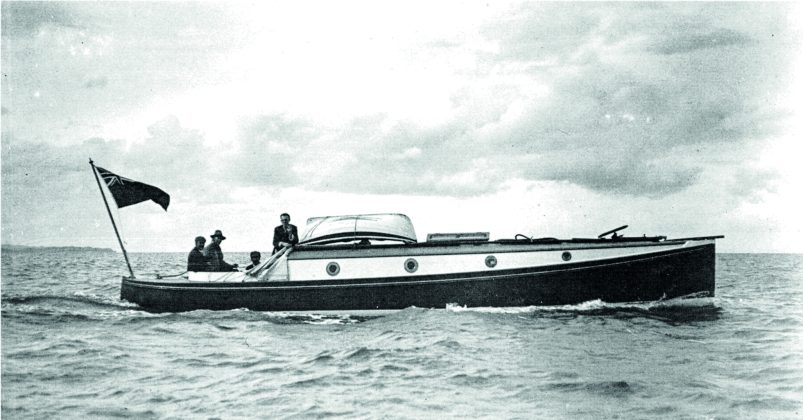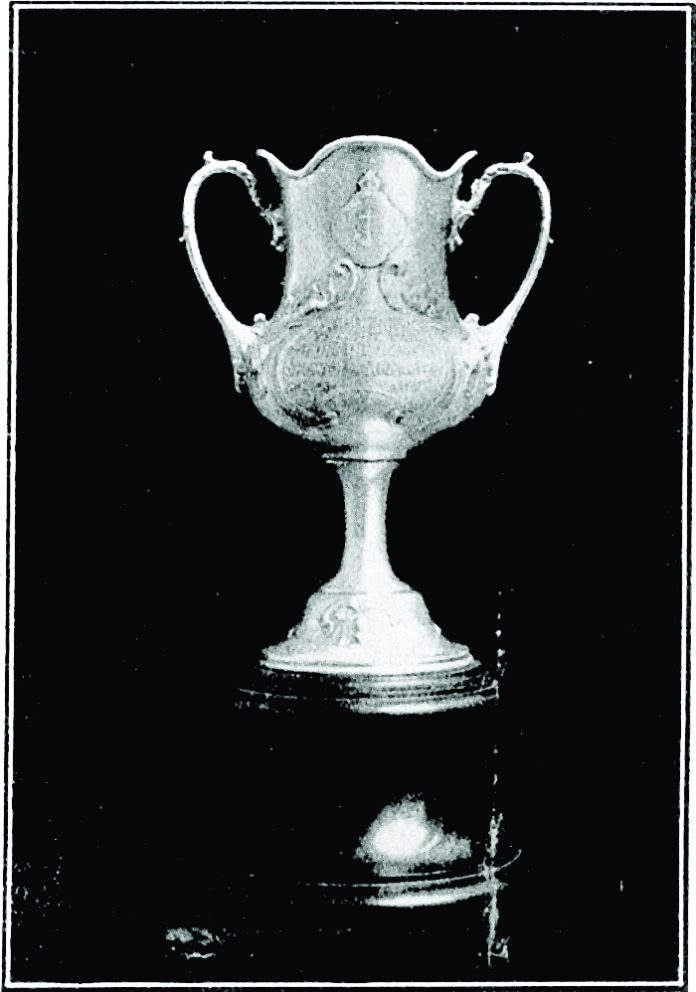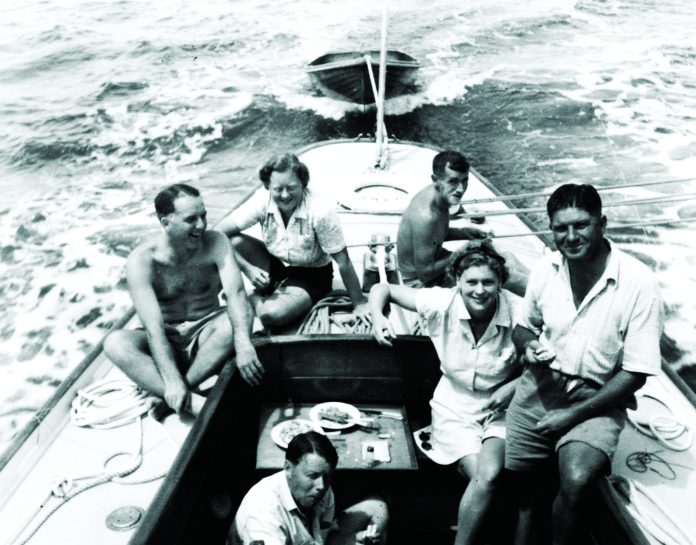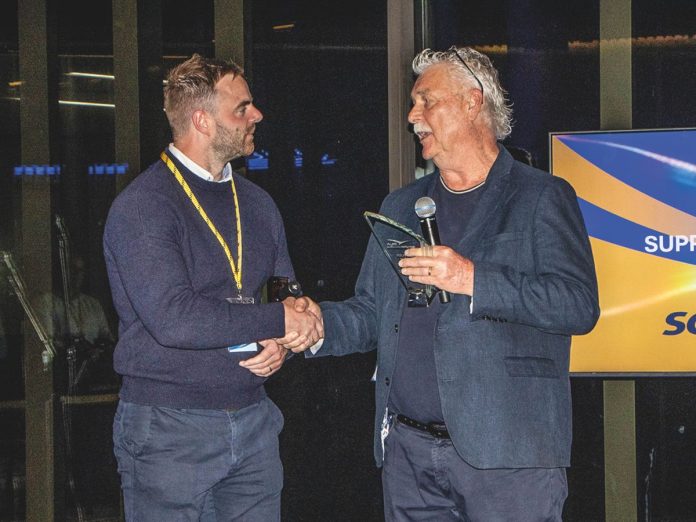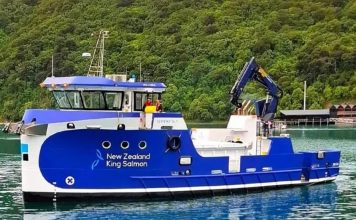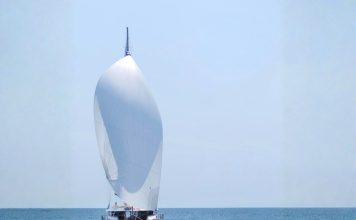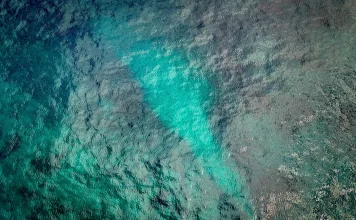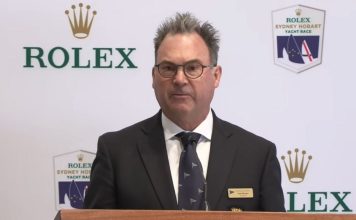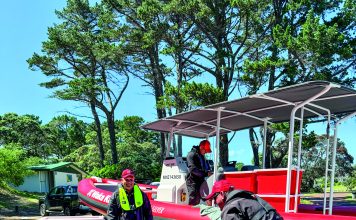It started when Harry Wilson, with Jack Wiseman, of the prominent Auckland saddlery firm, sold the crack centreboard cutter Jessie Logan and bought the keel yacht Tawera in May 1885. Tawera was only 18 months old. Robert Logan had built her for C.B. Stone and F.A. White in December 1883. Wilson and Wiseman used her extensively for cruising and racing, but traded her in on C.B. Stone’s much bigger Logan-built Matangi in October 1888. Two years later Harry Horton bought her and carried on cruising and racing her until he became managing director of the Herald in 1903 when Tawera sat on her moorings. In 1906 Logan Bros scrapped her for the lead in her keel, even though she was still totally sound.
Let’s go forward 30 years to 1935. In New Zealand and around the world, the pleasure boating scene had dramatically changed as the result of several factors.
The most obvious one was the meteoric rise of ‘oil launches’ as motor boats were called in the late 1890s and early 1900s. By 1906, when the first Tawera was scrapped, marine engines had become serious propulsion units, much more reliable than early examples, which often struggled with ignition and carburetion issues. The rapid blossoming of internal combustion engine technology associated with the motor car and, very shortly, the aeroplane, spun over to marine engines.

The big money in pleasure boating went rapidly into bigger, faster, and more palatial motor launches. The top boatbuilding firms like Logan Bros and Chas Bailey began very quickly to specialise in launches that equalled the classic raters they had built in the 1890s, which attracted the patronage of the moneyed classes. For example, Ramsay (Roy) Martyn Wilson, a former Logan Bros patiki sailor had Logans build him the smart double-ender launch Waiomo in 1905.
Boatbuilders’ trading had altered significantly, however. Half of the value of a new launch was in the engine. Many boatbuilders countered this by taking on agencies for marine engines, at that time almost totally US-built. Many of the early top-of-the-line engines, like Union and Standard, had their own active local agents, but in the 1910s Bailey & Lowe took on the Sterling; Collings & Bell the Doman and later the Redwing; T.M. Lane & Sons the Scripps; and Chas Bailey Jr the Loew Victor, all relatively high-powered, US-built units.
In 1905, against this trend, and shortly before the first Tawera was scrapped, Harry Horton’s younger brother Charles Horton commissioned Logan Bros to build him the ultimate cutter yacht, Ariki. Alf Gifford then had them build the 42-footer Rawene in 1908. She proved to be the last first-class keeler Logan Bros were to build. Their big jobs now were entirely upmarket motorboats. The Auckland orders for big keel yachts dried up completely. One last outlier before the World War erupted was Onelua, a 53-footer built by Chas Bailey Jr for the King of Tonga in 1913, but she went straight offshore to Tonga.
For the next 20 years Auckland boatbuilding firms like Bailey & Lowe, Collings & Bell and T.M. Lane & Sons poured out high-class, fast, reliable, family cruising-capable, comfortable motor launches.
A second factor was the rise of the local centreboarder classes from the turn of the 20th century to fill the gap. The indigenous ballasted ‘mullet boat’ played a big part in this. By 1914 the various restricted classes of mullet boats from 20 to 26 feet LOA had become a vigorous racing fleet and a potent learning environment for impecunious young yachtsmen. Equally, the unballasted round bilge classes that arose in Auckland and the square bilge classes in Wellington absorbed and trained a lot of the enthusiasts, especially after the Sanders Cup class of clinker round-bilge 14-footers became a national craze after 1919.
Thirdly, the population of the country had to reinvent itself after the loss of young men in Gallipoli and the Somme in World War One and the huge number of deaths in the general population in the Spanish ‘Flu epidemic that followed in 1919. It was the start of the new Jazz Age, a topic beyond the scope of this article.
Fourthly, by 1935, when the second Tawera was built, the whole world had been experiencing the Great Depression since the Wall Street stock market crash in October 1929. In New Zealand, massive unemployment was followed by deep social distress and dislocation, which reached rock bottom in the Queen Street riot of April 1932. There had been an immediate decline in the commercial building of new yachts and even motor launches. The ‘Charleston’ and the ‘Black Bottom’ had given way to ‘Brother, Can You Spare a Dime?’
During the 1920s just a handful of new keel yachts of any size had been built in Auckland; Joe Slattery built the Tasmanian One Design Vanitie in 1922 for the Morris brothers, Colin Wild built the 6m Delville for himself, Chas Bailey Jr produced the 8m Prize for W. Endean in 1923, a scaled down Onelua in fact, and in 1926 Colin Wild built a 47ft Bermudan cutter for the Winstone brothers. This was a drop in the ocean compared to the flood of first-class keel yachts built in Auckland in the 1890s.
After October 1929 and the completion of existing orders, trading conditions for boatbuilders became increasingly tight. All had to lay off staff and retrench. Chas Bailey Jr had only just recovered from a bankruptcy in 1928. During the proceedings for his discharge, the judge made the comment from the bench that Bailey’s yard was “a landmark of Auckland,” a recognition of the importance of Auckland’s ship and boatbuilding industry that had made its designers and builders a huge reputation.
I am certain that, as the worldwide Depression sank its teeth into the country’s economy, the wider Herald Wilson family set out to ensure that the tradition and skills of Auckland boatbuilders would survive through the hard times by pouring out commissions for launches and yachts that did a great deal to save the industry. W.R. (‘Willie’) Wilson, who had jointly owned Logan keel yachts since 1888 with his brother Fred (Isca, Moana I, Moana II, Queenie), had bought Ariki in 1919 and passed her on to his two young sons Robert (‘Bob’) Ballard Wilson and Stuart Scott (known as Scott) Wilson in 1924. She remained the fastest yacht on the Waitematā and was still the pride of the fleet and
a testament to Arch Logan and Logan Bros.
In the winter of 1933, following the Queen Street riots, Bob and Scott’s uncle, John Martyn Wilson decided to replace his 27ft Lane-built launch Wirihana with a magnificent 46ft motor cruiser in the latest style and commissioned Colin Wild to design and build her. With her 88hp Kelvin diesel, the new Wirihana (the Māori-ised version of ‘Wilson’) was launched in October 1933. An American pop song of the day expressed the sentiment so pragmatically being put into practice by the Wilsons.
“We’re in the money!
The skies are sunny!
Ol’ Man Depression, you are through, you done us wrong!
We never see a headline ‘bout a bread line today,
And when we see the landlord,
We can look that guy right in the eye!”
Then in December 1933, Jim Mitchelson’s keel yacht Little Jim, designed by Arch Logan and built by Logan Bros in 1901 as a fishing boat, came ashore at Catherine Bay, Great Barrier Island, and was a total loss. Jim’s aunt Bertha Wilson, the widow of Roy Wilson of the Herald, put up enough cash to have a replacement built. Little Jim II was a 43ft Bermudan-rigged cutter yacht designed by Arch Logan and built by Bill Couldrey at Sulphur Beach. Like Colin Wild, Couldrey was one of the few Auckland boatbuilders of whom Arch approved, not only because of their skills but also their temperate ways. On her trials in November 1934, Arch Logan was at the tiller. Willie Wilson was the helmsman for her first race the next month.
Following Little Jim II, on November 8, 1935 Bill Couldrey launched Waiomo, a slightly smaller yacht, again designed by Arch Logan. The new owner was Neil Mains, a nephew of Liston Wilson, who put up the money for the build. She was named after Roy Wilson’s 1905 Logan launch.
Eight days later, Colin Wild launched the 40-footer Lady Gay, another magnificent motor cruiser equipped with a 100hp Ailsa Craig diesel. She had been commissioned by Joseph McCartney Wilson, the youngest brother of Liston, Roy and John Martyn Wilson. Like Wirihana, her diesel engine was British-made, showing a positive patriotic element as it was helping the Old Country’s industries that were also struggling with the Depression.
This leads us to the second Tawera, the most magnificent yacht built in New Zealand since Nga Toa. Colin Wild launched the new Tawera, a light-green-hulled 50ft Bermudan cutter yacht, on December 12, 1935, again to a design by Arch Logan. Her owner was Scott Wilson, Fred Wilson’s son, continuing the Wilson-Logan tradition.
He named her Tawera as a tribute to his uncle Harry Wilson’s 1883 Robert Logan gaff cutter.
I shall deal with the fascinating history of the reborn Tawera in the next article.








